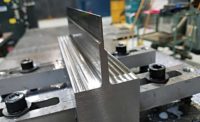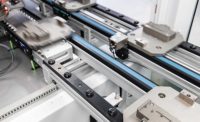DFMA Lets Engineers Focus on What They do Best

Raptor Performance in Concord, NC, designs and manufactures custom electronics for racing motorcycles and automobiles. The company’s products are not for hobbyists—these are professional-grade parts.
One of the company’s best-selling products is a dual-mode shift light. A shift light is a warning lamp for indicating to the driver that maximum engine speed has almost been reached. Ideally, the lamp will illuminate at the engine speed just beyond that which delivers the maximum brake horsepower, so that the horsepower before and after shifting is the same. A shift light allows the driver to judge the exact point that a gear change should be carried out without having to glance down at the tachometer. This maximizes acceleration while enabling the driver to keep his focus on the track.
Raptor Performance is a tight-knit organization. In fact, there are times when design engineers carry out some of the steps in manufacturing a product because of the need for precision and engineering judgment in the assembly process. Perhaps as a result of this approach, the company has earned a reputation for high-quality products.
However, this demand for design engineers to be a part of manufacturing has adversely affected how much time they can spend on new product development, and that’s a problem. The company has many ideas for new products, but it sometimes has difficulty bringing them to market quickly, in part because of this diffusion of effort.
Fortunately, by applying the concepts of design for manufacture and assembly (DFMA), Raptor is overcoming this challenge. DFMA offers many benefits. These include optimizing production costs, reducing manufacturing time, and improving product quality. As a side benefit, it can help your organization make the most of the skills of its engineering staff. Ultimately, all these benefits ensure profitability.
Engineers use DFMA to ensure that a design can be produced at the required volume, quality and cost. These concepts are applied during product development, so there aren’t multiple hand-offs between the design and manufacturing departments. Instead, design and manufacturing work together. Designing a product—and then redesigning it with each lesson learned during manufacture and assembly—consumes time that provides no benefit. In other words, it is waste and cost.
Every new product starts with decisions based on design engineering objectives, physical and economic constraints, and customer expectations. These decisions naturally do not consider the manufacturing effort that will be required to make the parts and assemble them. From the design engineer’s perspective, optimizing a product for manufacture and assembly is the province of the folks in production. Overcoming this mindset is what DFMA is all about.
At Raptor, one example of this interplay between design and manufacturing arose over whether a product should have a connector or a “pigtail.” A pigtail is wire harness from a module, one end of which will not be terminated by a connector. From the design engineer’s perspective, both options would work equally well. However, manufacturing engineers may prefer the pigtail over the connector for various reasons. Perhaps the potted assembly will be easier to manage without a connector. Or, because the connector must be sealed against the elements, it would add cost to the assembly.
DFMA answers questions about how to make the product while the design is underway. The objective is to make the most of a company’s manufacturing capabilities. It also keeps design engineers off the line and in the development lab.
Looking for a reprint of this article?
From high-res PDFs to custom plaques, order your copy today!





